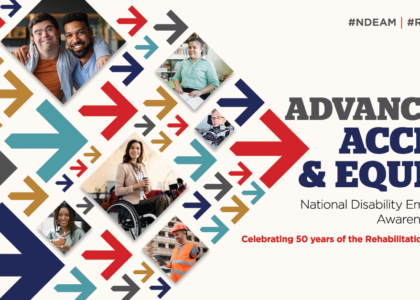In discussions surrounding disability and social participation, the terms “community integration” and “community inclusion” are often used interchangeably. While they share a common goal of fostering a sense of belonging for individuals with disabilities within their communities, there are nuanced differences between the two concepts. In this blog post, we will explore the distinctions between community integration and community inclusion, highlighting their unique characteristics and implications.
Community Integration
Community integration refers to the process of individuals with disabilities becoming a part of the broader community and accessing community resources, services, and opportunities. It focuses on facilitating the physical presence and participation of individuals with disabilities within community settings.
Key features of community integration include:
a) Physical Presence: Community integration emphasizes the physical aspect of being present and visible within the community. This involves living, working, and engaging in activities in the same locations as individuals without disabilities.
b) Access to Services: It involves ensuring equal access to community services, such as education, healthcare, transportation, and recreational facilities, so that individuals with disabilities can fully participate in community life.
c) Removal of Barriers: Community integration seeks to eliminate physical, architectural, and attitudinal barriers that hinder individuals with disabilities from engaging with the community. This may involve making accommodations, modifying environments, and promoting accessibility.
Community Inclusion
Community inclusion, on the other hand, goes beyond mere physical presence and emphasizes the social and emotional dimensions of belonging and participation. It focuses on creating an inclusive environment where individuals with disabilities are accepted, valued, and actively involved in community life.
Key features of community inclusion include:
a) Social Acceptance: Community inclusion highlights the need for acceptance, respect, and recognition of individuals with disabilities as valued members of the community. It involves challenging stereotypes, prejudice, and discrimination and fostering an atmosphere of equality and understanding.
b) Active Participation: Inclusion involves providing opportunities for individuals with disabilities to actively engage in community activities, decision-making processes, and social interactions. It aims to ensure their voices are heard and their contributions are valued.
c) Relationships and Networks: Community inclusion recognizes the importance of fostering meaningful relationships and social networks for individuals with disabilities. It promotes connections with peers, neighbors, coworkers, and community members, facilitating a sense of belonging and social support.
d) Personal Fulfillment: Inclusion strives to enhance the overall well-being and quality of life for individuals with disabilities. It emphasizes the importance of personal growth, self-determination, and the pursuit of individual goals and aspirations.
Understanding the Relationship
While community integration and community inclusion are distinct concepts, they are interconnected and mutually reinforcing. Community integration often serves as a prerequisite for community inclusion. By ensuring physical access and removing barriers, individuals with disabilities can have the opportunity to actively participate, form relationships, and experience a sense of belonging.
In practice, community integration can lay the foundation for community inclusion by creating inclusive spaces where individuals with disabilities are welcomed and can thrive. Community inclusion, in turn, enriches community integration by fostering acceptance, promoting social connections, and challenging exclusionary practices.
In the quest for a more inclusive society, it is essential to grasp the distinctions between community integration and community inclusion. While community integration focuses on physical presence and access to resources, community inclusion delves deeper into the social, emotional, and relational aspects of belonging. Both concepts are integral to fostering a society that values diversity, respects the rights of individuals with disabilities, and actively engages them in all aspects of community life. By recognizing and embracing these distinctions, we can work towards creating truly inclusive communities where everyone can flourish.





